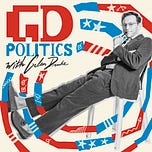The video version of this podcast is available to paid subscribers here.
The last time I spoke with today’s guest it was late September of 2021 and I started the podcast by citing recent FBI crime data: “The murder rate increased by 30 percent from 2019 to 2020 meaning 4,900 more people were killed in homicides in 2020 than the year prior. That amounts to the largest single year increase since records began in 1960.”
Today the story is very different. Data from the first half of the year suggests that the U.S. is on track to have the largest one-year drop in murder on record for the third straight year. The absolute numbers are also remarkable. Los Angeles, Baltimore and Detroit have all recorded the fewest murders at this point in the year since the mid-1960s. San Francisco has recorded the fewest murders ever and so has New York City (spare one year, 2017). Violent crime more broadly and property crime are also at or near historic lows.
It’s a major success story that has already attracted competing explanations and ideological debate. It has also gone largely unnoticed by Americans. Sixty-four percent say there is more crime now than there was last year, according to Gallup. Although that’s a noticeable drop from 2023, when 77 percent said there was more crime, it still leaves the majority of Americans with the wrong impression.
With me to talk about it all is Jeff Asher. He’s worked as a data analyst for the New Orleans police department and the CIA. He’s also the co-founder of AH Datalytics and writes about crime data at Jeff-alytics on Substack.












